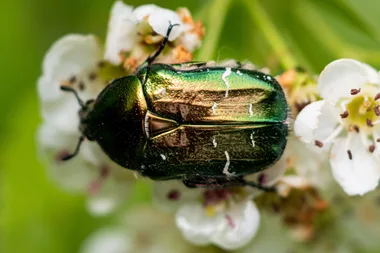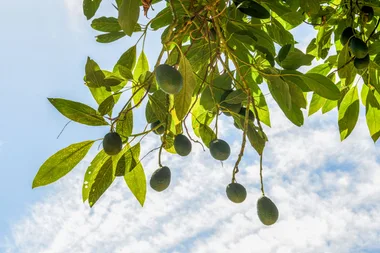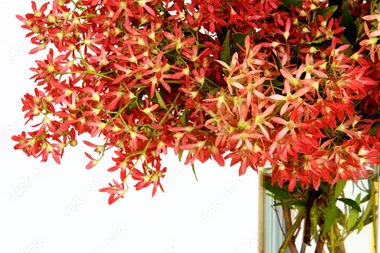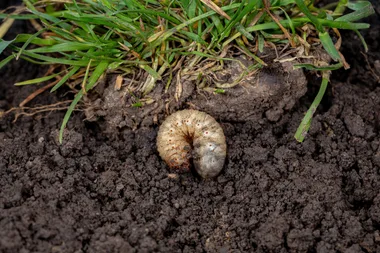Apples are so wonderfully versatile – just as good for eating fresh as they are for cooking and preserving in a multitude of ways. But until you’ve tasted a juicy sun-ripened apple picked straight off the tree, you won’t know what you’re missing. Think you can’t grow them at your place? Think again!
WATCH: Easy As’ Apple Pie
Choose a good apple
Selecting the right variety for your region is crucial, as this is the key to ensuring a bountiful harvest. It’s also important to note that certain apples will perform better if there’s another variety grown nearby to help with pollination. Ask your fruit-tree specialist for advice before buying.

Aspect
Apple trees can tolerate extreme cold (think Russia!), but certain varieties have been bred to suit warm and even sub-tropical regions. They grow best in full sun, but will also cope with part-sun. Position trees where they will be protected from strong winds and avoid planting in seaside areas, where they may not grow well.
Choose a spot in your garden that gets all-day sun and ensure your soil is well-nourished and well-drained.
Climate
The best time to plant an apple tree is in winter when it’s dormant. You can buy bare-root trees from nurseries or order online – they will look like bundles of sticks.

Soil
While apple trees prefer deep, rich, well-drained loam, they’re adaptable to other soil types. However, avoid the two extremes of waterlogged or excessively dry positions. If you’re planting in pots or tubs, always use a premium potting mix.
Build a raised bed if drainage is a problem.
Also, mulch the soil.
Fertiliser
These fruit trees require relatively little feeding once they’re established. However, they will appreciate an application of a suitable controlled-release fertiliser each spring.
Water and add liquid seaweed solution to keep roots healthy.
Water
Like any temperate-climate fruit tree, apples require little to no additional water during the autumn and winter months. As the fruit forms over the spring and summer months, water them occasionally between rainy periods, and mulch and water well during hot summer weather. Trees growing in pots shouldn’t be allowed to completely dry out.
Keep roots moist in a bucket of water or wrapped in a wet towel until you plant.
Water well during the tree’s first summer.
Maintenance
Healthy apple trees are highly productive – if you don’t think you can crunch your way through your harvest, thin your crop in summer when you see the fruit maturing. Limbs heavy with fruit can break and invite disease.
Remove damaged roots with clean, sharp secateurs. Dig a hole as deep as the roots and twice as wide so roots can easily spread. Hammer a stake into the hole.
Pruning
Apple trees are easy to prune into the shape you want – think espaliers – so training them over an arch will give you shade in summer, fruit in autumn and light for your garden beds in winter. Blossoms in spring are a bonus!
Seasonal care
In spring, weed around trunk, keep up mulch and add seaweed solution each month.
In summer, thin fruit or trim fruit-bearing limbs – if branches get too heavy they can snap and invite disease.
In autumn, pick fruit. Apples are ready for harvest when the fruit comes away easily when you twist the stalk. Early-season fruit (from January) and many mid-season (March) apples should be eaten immediately, while some mid-seasons can be stored for a few weeks. You can store late-season fruit (April-May) for up to six months.
In winter, give your tree a heavy prune, cutting just above fruiting spurs, so you can control its growth habit or remove damaged limbs. Thin out the branches so light gets to all parts of the tree. You can cut back new growth by up to two-thirds. Then wrap the trunk with a grease band to prevent winter moth caterpillars from climbing the tree and laying their eggs in your emerging fruit.
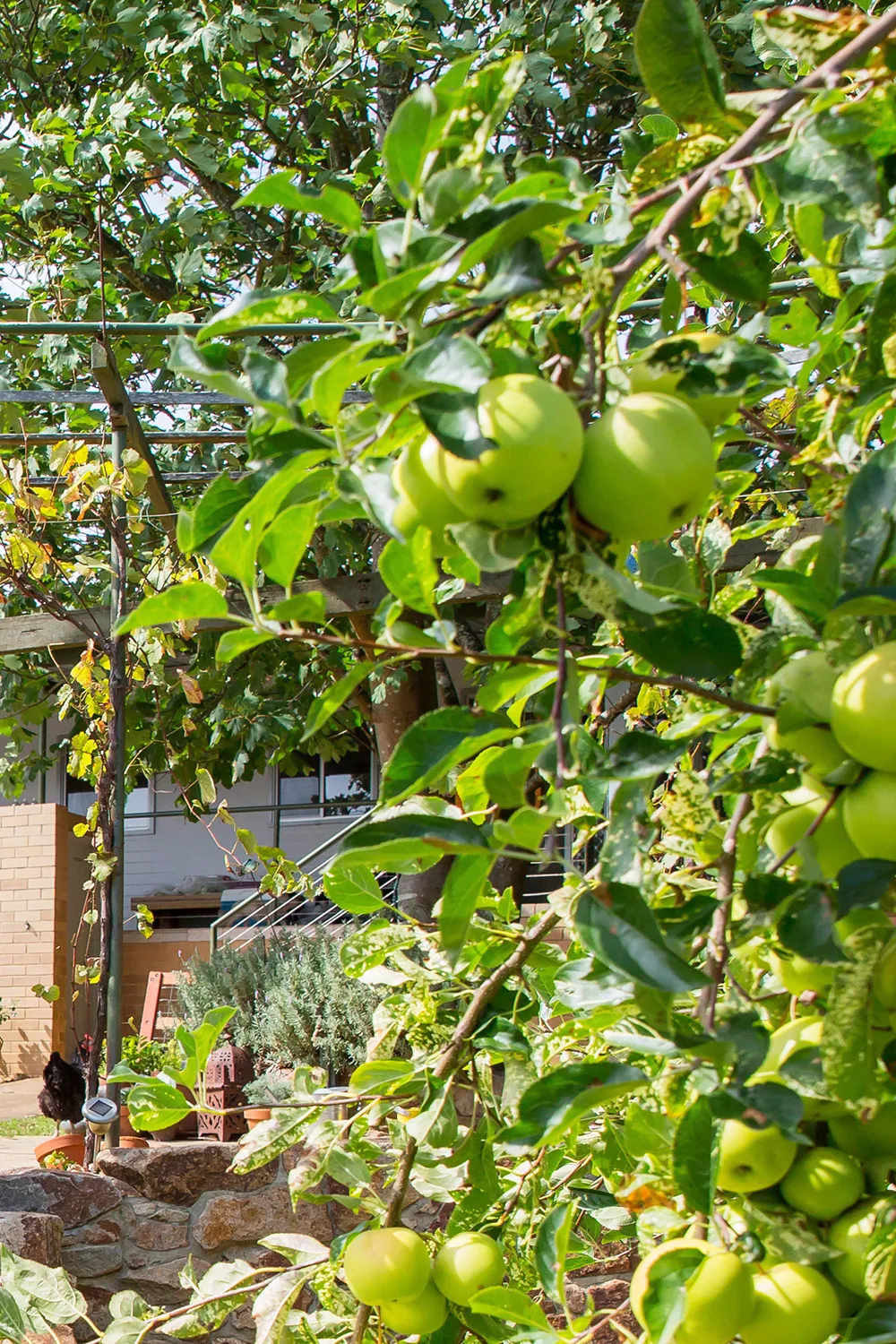
Granny Smith
Perhaps Australia’s best-known export, originating in Eastwood, NSW, the Granny Smith has been a favourite for generations. The flesh is crisp and white with a tangy taste, though it will sweeten if stored. It’s great for eating fresh, cooking or using in salads.
Fruit size: Medium.
Colour: Green.
Fuji apple
A ripe Fuji apple has a honey-like flavour. It’s great for enjoying fresh and ideal for any sort of culinary use where sweetness is desired.
Fruit size: Medium to large.
Colour: Pinky red with pale yellow undertones.
Pink Lady (cvr. ‘Cripps Pink’)
A popular variety, especially with kids, due to its delicate sweet flavour, Pink Lady originated in Western Australia. It has a fine texture with serious crunch – eat fresh or use in cooking; it’s perfect for salads as it’s quite slow to brown.
Fruit size: Medium.
Colour: Reddish-pink to pink.
Sundowner (cvr. ‘Cripps Red’)
This apple is the botanical sibling of Pink Lady, but has a more pronounced flavour and is slightly sweeter.
Fruit size: Medium.
Colour: Red-green.
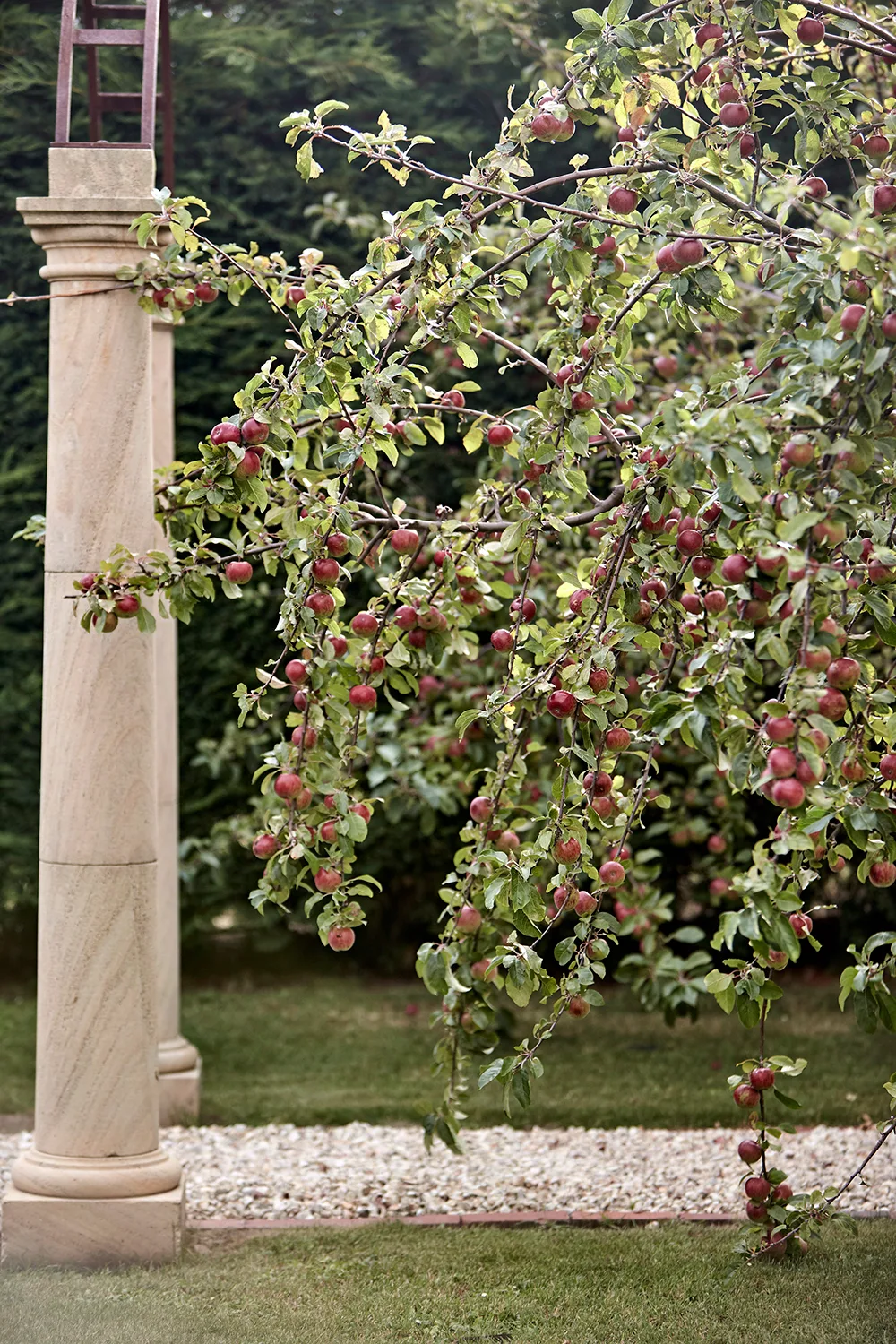
Dwarf apples
Just because you’re tight on outdoor space, it doesn’t mean you have to go without an apple tree. There’s a range of dwarf and compact varieties available that are suitable for garden beds, large tubs or planter boxes – just make sure the tree is positioned in a sunny spot. And remember, the term dwarf only relates to the tree itself – the fruits are still regular size.
When space is limited dwarf apple trees can sit in a sunny corner of your balcony.
Ballerina columnar varieties
These gorgeous trees are perfect for narrow spots, such as along a driveway, or even as a screen or hedge. They grow to about 600mm wide by 3.5m tall, although it takes the tree several years to achieve this height. They’re available in a number of varieties, including ‘Flamenco’, ‘Bolero’, ‘Waltz’, ‘Charlotte’, and the crabapple ‘Maypole’.
Trixzie miniatures
These little beauties are ideal for smaller spaces where a tiny bit of spread is still okay. There are two apples in the range – Trixzie ‘Gala’ and Trixzie ‘Pink Lady’. Both grow to about 2.5m high and have a spread of 2.5m.
Pinkabelle
This mini version of the Pink Lady apple is great for patios and decks. It grows to about 2m high and 1m wide.
Leprechaun
As its name suggests, this is a dwarf form of the Granny Smith apple. It grows to about 2-2.5m high and 1m wide, and produces excellent fruit. Leprechaun occurred naturally as a branch on a full-sized Granny Smith tree.
Apples which love the heat
If you live in a warmer climate that doesn’t experience winter frosts, it’s important to pick a low-chill variety of apple. Many of these will produce bountiful crops, even in sub-tropical climates. Check with your local nursery or order trees online.
Anna
A low-chill or sub-tropical variety, Anna was developed in Israel and is similar to Golden Delicious,
from which it originates. The fruit is sweet and crunchy when homegrown and allowed to tree-ripen, and can be enjoyed fresh or cooked.
Fruit size: Large.
Colour: Red-green.
Dorsett Golden
Perhaps the best low-chill or sub-tropical apple, Dorsett Golden produces fruit with crisp flesh yet sweet flavour. It will fruit very early after planting and is a top apple for eating freshly picked from the tree.
Fruit size: Large.
Colour: Yellow to gold.
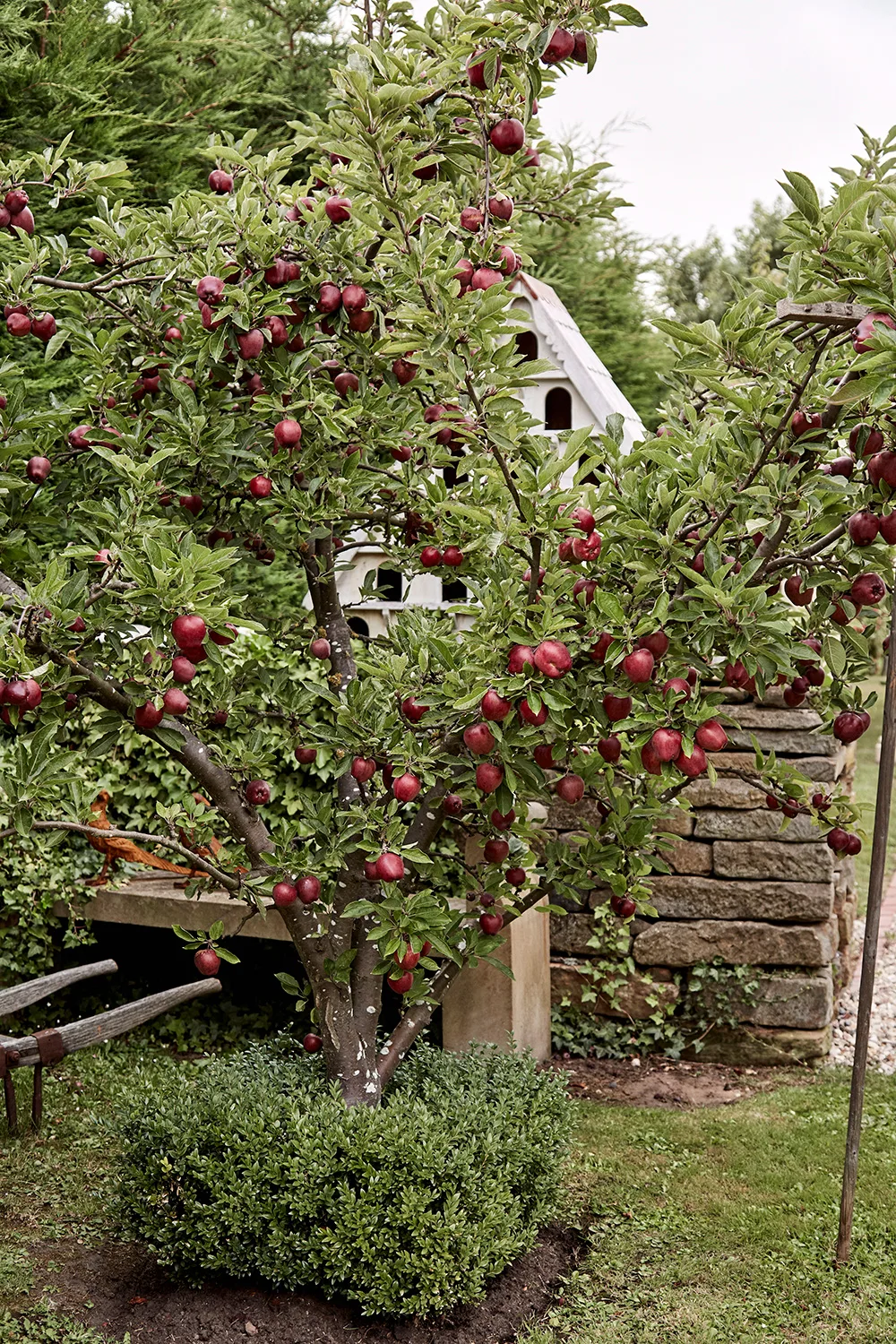
The pick for you
Most apple trees need a cold winter with frosts to initiate the budding that goes on to create beautiful, crisp fruit. But you can now get trees for warmer climates – called low-chill varieties – such as Dorsett, Tropical Anna and Tropic Sweet. Apples come in two categories – dessert and culinary. Dessert apples are eaten raw while culinary apples are mainly used for cooking – they’re generally larger, the flesh is firmer so they don’t break down too much when cooked and they have a tarter taste. But there’s nothing stopping you eating culinary apples raw or cooking with dessert apples!
Not all apples are ready for harvest at the same time, so pick regularly to stop them dropping to the ground and rotting. Only pick those that come away easily, ensuring the stalk stays with the fruit.
Storage
Store late-season apples in a cool, dark spot. Also make sure it can’t be accessed by rodents or possums. Ensure fruit isn’t bruised or damaged. Lay on shredded newspaper or, better still, wrap each apple in paper.
Handy apple sources
– Woodbridge Fruit Trees specialises in many old and heirloom varieties. You can order online or by postal order – delivery nationwide.
– Daleys Fruit Tree Nursery carries an extensive range of fruiting and rainforest trees, including sub-tropical apple varieties.
– Fleming’s Nurseries is Australia’s leading grower of fruit and ornamental trees, including the Trixzie and Ballerina dwarf apples. Trees can be ordered through nurseries Australia-wide.
– PlantNet offers online sales and a database of stockist nurseries. Pinkabelle and Leprechaun varieties are available through PlantNet.
You may also like
6 flowering trees that add big impact
How to hang bromeliads in a tree
